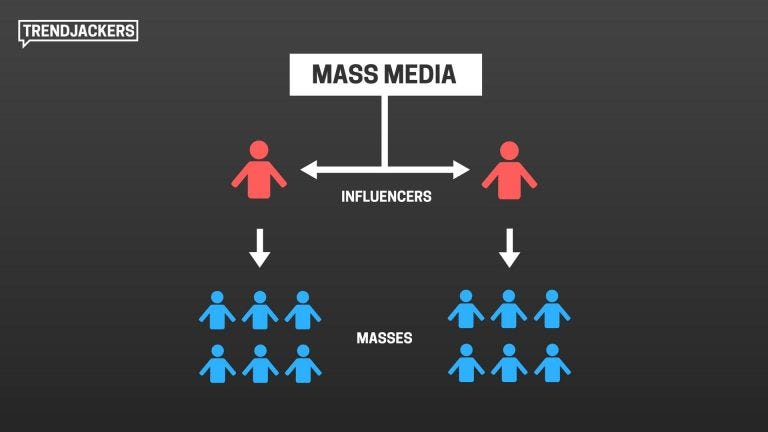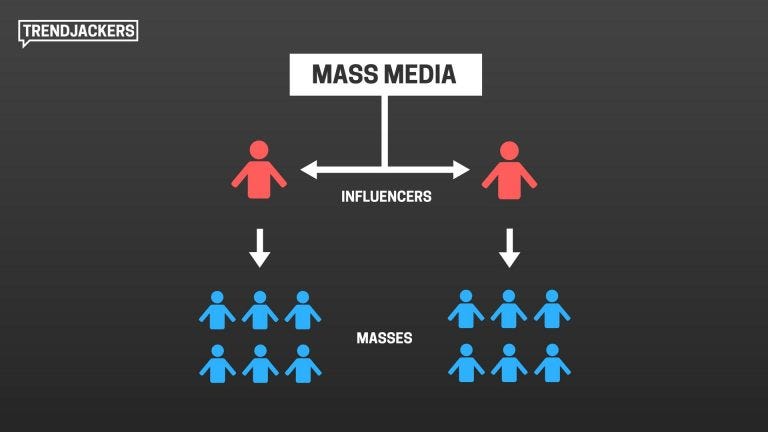
The two-step flow theory is a communication theory proposed by sociologist Paul Lazarsfeld in 1944, and it was introduced to explain how information and messages from the media make their way through society, in two distinct ways. The theory proposes that messages provided by the media do not directly influence the public, but first make their way to ‘opinion leaders’ who then interpret the information and redistribute it to their followers, who are in this case the public. This communication model exposes the importance of interpersonal relationships in shaping public opinion and highlights how the medias influence is less direct – mediated by social relationships.
An example of the two-step flow theory can be seen through the medium of comics and social media. Say for example a major comic book title is released by Marvel comics(Mass Media), they’ll advertise across multiple mediums, however many casual readers won’t engage with this content directly. They will however, interact and engage with trusted opinion leaders in the community, a massive example being Comicstorian who boasts a whopping 3.1 million subscribers(Opinion Leader), basing their own opinions on the information that is relayed to them. This then encourages or discourages the public(Masses) from engaging with the comic, perfectly illustrating the two-step flow theory.
The theory itself has remained applicable to this day, even more so with the growth of social media, with opinion leaders being able to create a platform for themselves and distribute media messages to their followers. I think the theory holds truth, however that isn’t necessarily a good thing as it potentially skews information and causes people to formulate opinions, which may be misinformed. It also has an effect on the public’s ability to think freely, where we’ve become so reliant on influencers and opinion leaders, which in this case are the same, to the point where we instantly turn to them to create opinions for us. Obviously, diversity within opinion leaders will create differences in public opinion, however it’s still influenced by a third party.

